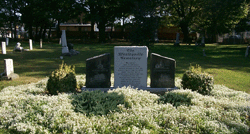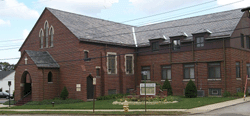History
On July 8, 1912, a group of men gathered in the hall above “Chaffee’s Store” to learn how to administer the new and recently incorporated (officially on May 31, 1912) “Borough of Wesleyville”. Attorney P.V. Gifford met and explained the governing laws to the Borough Council. In attendance were the first Council President Harry E. Wagner, Clerk Edward C. Woodwin and Burgess William E. Chaffee. Others present were Edmond J. Brooks, John Brown, William H. Gray, Charles S. Jeffrey, Sylvester V. Travis, and Fred W. Waxham – all leading men in this small community and certainly fitting to constitute the first ruling body of the town.
 Wesleyville was no new settlement. It had been 100 years since the first religious class organized in 1810 and 84 years since John Shadduck laid out the village, named for John Wesley, founder of Methodism. The village was situated between the western boundary of Harborcreek Township and Four-Mile Creek, generating a number of grist and lumber mills over the years.
Wesleyville was no new settlement. It had been 100 years since the first religious class organized in 1810 and 84 years since John Shadduck laid out the village, named for John Wesley, founder of Methodism. The village was situated between the western boundary of Harborcreek Township and Four-Mile Creek, generating a number of grist and lumber mills over the years.
 The main street was tree-lined and one of the prettiest locations was the site of the old brick Methodist Episcopal Church on the north side of the main road (Buffalo Road).
The main street was tree-lined and one of the prettiest locations was the site of the old brick Methodist Episcopal Church on the north side of the main road (Buffalo Road).
Behind it lay the cemetery with truly venerable maple trees over-spreading the whole scene.
From these humble beginnings, grew the more sophisticated Borough government of today. However, becoming a Borough did not automatically make Wesleyville a modern town. It was still a small village of dirt streets, inadequate sidewalks, non-existent sewers, and poor lighting. A trolley line ran through the center of town and although automobiles were coming into use, the sight of a horse was not uncommon. Most homes maintained a kitchen garden and a few chickens with some having a cow or two. This rapidly changed as the Borough grew. New homes were built as new sections of town opened, and new streets were laid out and old streets paved.
